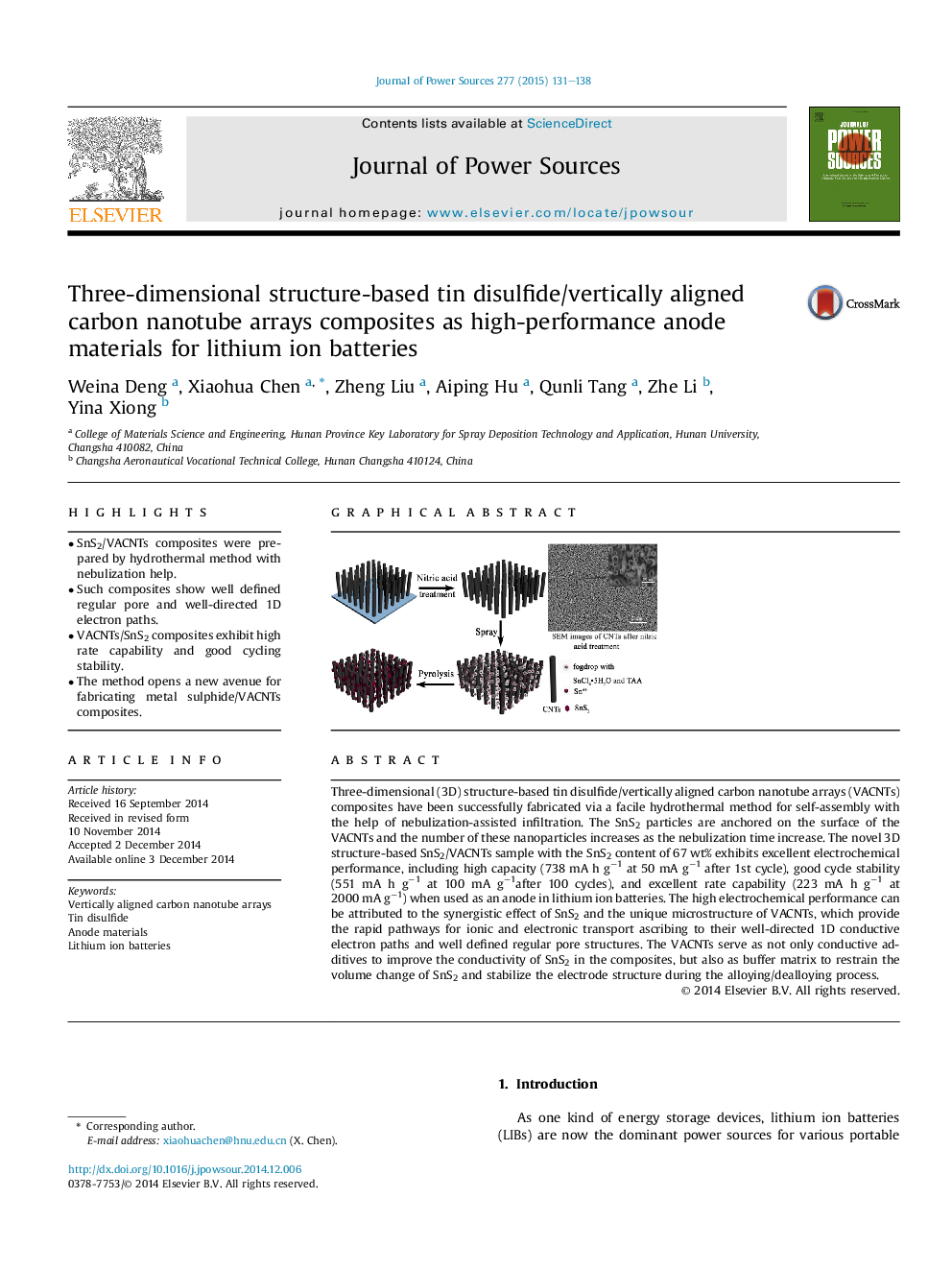| کد مقاله | کد نشریه | سال انتشار | مقاله انگلیسی | نسخه تمام متن |
|---|---|---|---|---|
| 1286816 | 1497955 | 2015 | 8 صفحه PDF | دانلود رایگان |
• SnS2/VACNTs composites were prepared by hydrothermal method with nebulization help.
• Such composites show well defined regular pore and well-directed 1D electron paths.
• VACNTs/SnS2 composites exhibit high rate capability and good cycling stability.
• The method opens a new avenue for fabricating metal sulphide/VACNTs composites.
Three-dimensional (3D) structure-based tin disulfide/vertically aligned carbon nanotube arrays (VACNTs) composites have been successfully fabricated via a facile hydrothermal method for self-assembly with the help of nebulization-assisted infiltration. The SnS2 particles are anchored on the surface of the VACNTs and the number of these nanoparticles increases as the nebulization time increase. The novel 3D structure-based SnS2/VACNTs sample with the SnS2 content of 67 wt% exhibits excellent electrochemical performance, including high capacity (738 mA h g−1 at 50 mA g−1 after 1st cycle), good cycle stability (551 mA h g−1 at 100 mA g−1after 100 cycles), and excellent rate capability (223 mA h g−1 at 2000 mA g−1) when used as an anode in lithium ion batteries. The high electrochemical performance can be attributed to the synergistic effect of SnS2 and the unique microstructure of VACNTs, which provide the rapid pathways for ionic and electronic transport ascribing to their well-directed 1D conductive electron paths and well defined regular pore structures. The VACNTs serve as not only conductive additives to improve the conductivity of SnS2 in the composites, but also as buffer matrix to restrain the volume change of SnS2 and stabilize the electrode structure during the alloying/dealloying process.
Figure optionsDownload as PowerPoint slide
Journal: Journal of Power Sources - Volume 277, 1 March 2015, Pages 131–138
